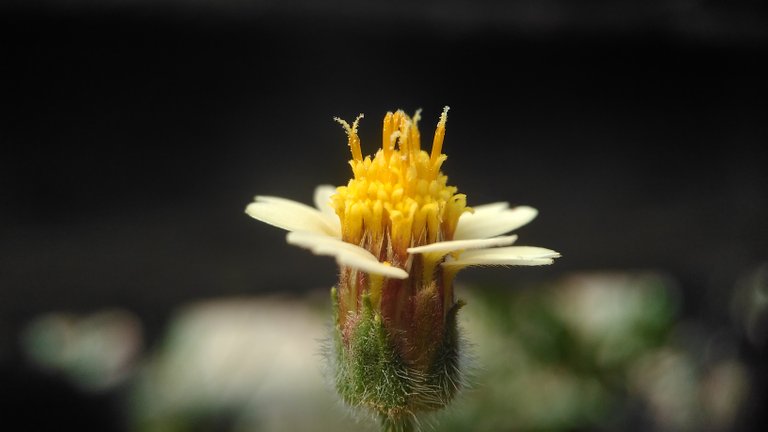
Pollen is a dissemination tool and generative reproduction of flowering plants. Pollen is a modification of sperm cells. In cytology, pollen is a cell with three nuclei, each of which is called the vegetative nucleus, I generative core, and the core generative II. Cells in the pollen is protected by two layers (called intine to the inside and exine are on the outside) to prevent dehydration.
Pollen does not survive long in the wild.
The powder sariPollen itself is not gametes men, but each contains grains of pollen vegetative (non-reproductive) cells (only one cell in most flowering plants but several other plants) and a generative (reproductive) cell containing two nuclei: a tube nucleus (that produces the pollen tube) and a generative nucleus (that divides to form two sperm cells). A group of cells surrounded by cellulose-rich cell wall called intine, and resistant outer wall composed largely of sporopollenin called exine.
Pollen is produced in microsporangium (contained in an anther Angiosperm flower, male cone of a coniferous plant, or male cone of other plants). Pollens come in various shapes (most often spherical), size, and surface markings characteristic of the species (see electron micrograph at top right). Pine pollen, pine, and fir are winged. The smallest pollen grain, that of Myosotis spp., Is about 6 μm (0.006 mm) in diameter. Wind-borne pollen can be larger around 90-100 lm. Studies of pollen called Palynology and highly useful in paleoecology, paleontology, archeology, and forensics.
In angiosperms, during flower development the anther is composed of a mass of cells that appear undifferentiated, except for a partially differentiated dermis. Like the flower develops, four groups of cells sporogenous form in anther cells sporogenous fertile surrounded by layers of cells sterile growing into wall pockets pollen, some of the cells grow into the cells of nutrients that provide nutrition for the microspores that formed by meiosis of a cell sporogenous. Four haploid microspores are produced from each diploid cells sporogenous called microsporocyte, after meiotic division. After the formation of the four microspores, which are contained by callose walls, the development of the pollen grain walls begins. Callose wall is broken down by an enzyme called callase and liberate the pollen to grow in size and shape characteristics develop and form a resistant outer wall called the exine and an inner wall called intine. The exine is what is stored in the fossil record.
Pollen wall protects the sperm nucleus while the pollen grain moving from the anther to the stigma, to protect the vital genetic material from dry and solar radiation. Pollen grain surface is covered with wax and protein, which is held in place by structures called sculpture elements on the surface of the grains. Exterior walls of pollen to prevent pollen grain from shrinking and crushing the genetic material during drying and consists of two layers. The second layer is the tectum and the foot layer, which is just above intine. Tectum and foot layer are separated by an area called the columella, which consist of reinforcement rods. The outside walls are built with resistant biopolymer called sporopollenin. The pollen tube passes through the wall of a structure called a hole.
Pollen apertures are any modification of the wall pollen grain. Such modifications include thinning, ridges and pores, they serve as a way out for the pollen contents and allow shrinking and swelling of the grain caused by changes in water levels. Wrinkle in the pollen grain is called colpi, which along with pores, are the main criteria for identifying pollen classes.
Pollen grains may have a wrinkle, orientation (relative to the original tetrad of microspores) classify the pollen as colpate or sulcate. Number of grooves or pores helps classify the flowering plants, with having three colpi Magnoliopsida (tricolpate), and other groups having one sulcus.
Except in the case of some plants submerged in water, the mature pollen-grain has a double wall, a thin delicate wall unchanged cellulose (the endospore or intine) and a tough outer cuticularized exospore or exine. Exine often bears spines or warts, or various sculptured, and the character of the signs is often value for identifying genus, species, or even farming or individual. In some plants flowering, seeding of the pollen grain often begins before leaving microsporangium, with the generative cell forming the two sperm cells.
Transfer pollen to the female reproductive structure (pistil in angiosperms) is called pollination. This transfer can be mediated by the wind, in this case the plant is described as anemophilous (literally wind-loving). Anemophilous plants usually produce large amounts of pollen are very light, sometimes with air-sacs. Non-flowering plants (eg pine trees) are typical anemophilous. Anemophilous flowering plants generally have inconspicuous flowers. Entomophilous (literally insect-loving) plants produce pollen that is relatively heavy, sticky and protein-rich, for deployment by insect pollinators attracted their interest. Many insects and some mites are specialized to feed on pollen, and are called palynivores.
Non-flowering seed plants, pollen pollen germinates in the room, which is located beneath and inside the micropyle. A pollen tube is produced, which grows into the nucellus to provide nutrients for the development of sperm cells. Gnetophyta Pinophyta sperm cells and is without flagella, and carried by the pollen tube, while those Cycadophyta and Ginkgophyta have many flagella.
When placed on the stigma of a flowering plant, under favorable conditions, the pollen grain puts forth a pollen tube that grows in the ovary to the style network, and make your way along the placenta, guided by projections or hairs, to the micropyle of the ovule. Core tube cell has meanwhile passed into the tube, as does also the generative nucleus which divides (if not already) to form two sperm cells. Sperm cells are carried to their destination at the end of the pollen-tube.
Congratulations @mosque! You have received a personal award!
Click on the badge to view your own Board of Honor on SteemitBoard.